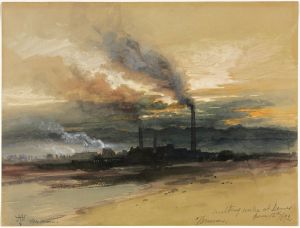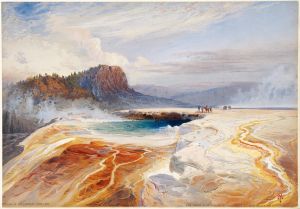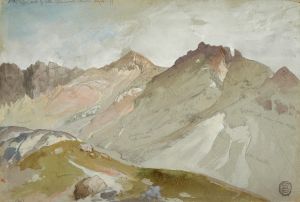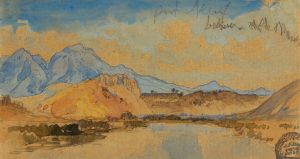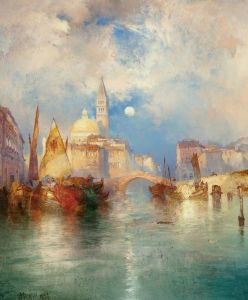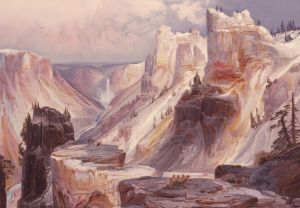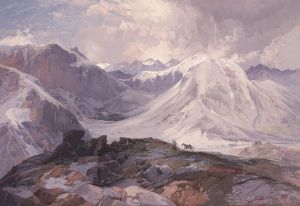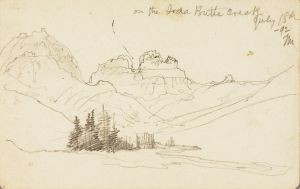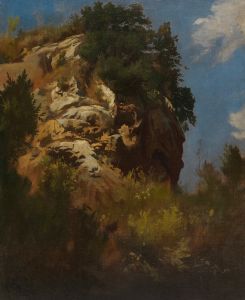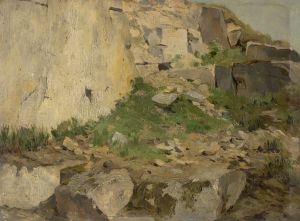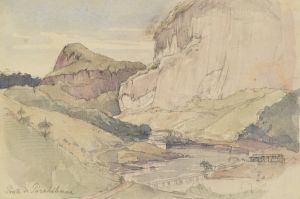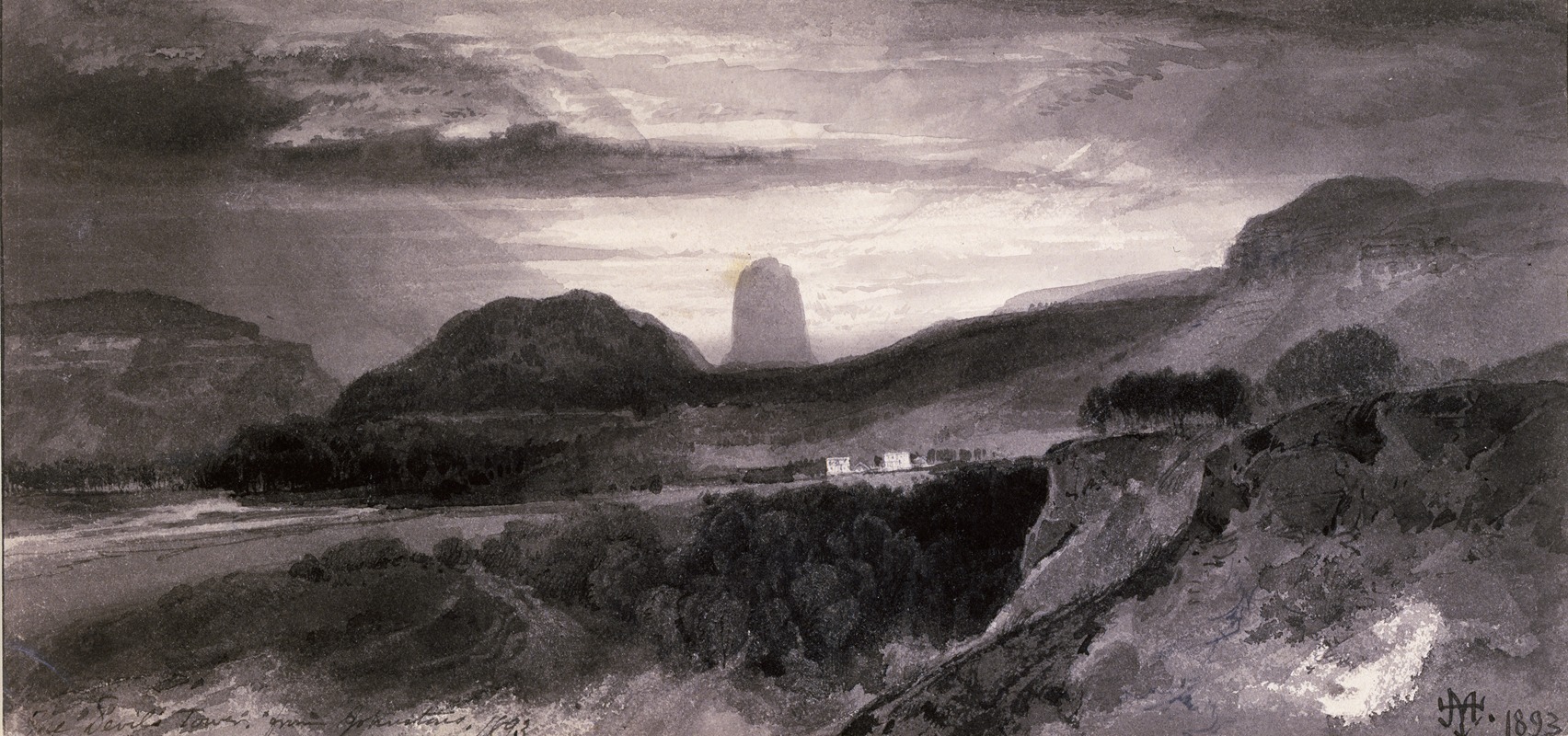
The Devil’s Tower from Johnstons
A hand-painted replica of Thomas Moran’s masterpiece The Devil’s Tower from Johnstons, meticulously crafted by professional artists to capture the true essence of the original. Each piece is created with museum-quality canvas and rare mineral pigments, carefully painted by experienced artists with delicate brushstrokes and rich, layered colors to perfectly recreate the texture of the original artwork. Unlike machine-printed reproductions, this hand-painted version brings the painting to life, infused with the artist’s emotions and skill in every stroke. Whether for personal collection or home decoration, it instantly elevates the artistic atmosphere of any space.
Thomas Moran was a prominent American painter and printmaker of the 19th century, known for his dramatic landscapes of the American West. One of his notable works is "The Devil’s Tower from Johnstons," which captures the striking natural monument known as Devils Tower, located in the northeastern part of Wyoming.
Devils Tower is a geological feature that rises dramatically 1,267 feet above the surrounding terrain and is considered sacred by several Native American tribes. It was declared the first United States National Monument by President Theodore Roosevelt in 1906. The tower is a popular subject for artists and photographers due to its unique appearance and the mystique surrounding its formation and cultural significance.
Thomas Moran was part of the Hudson River School, a mid-19th century American art movement characterized by its realistic and detailed portrayal of nature. Moran's work often emphasized the sublime beauty of the American landscape, and he is particularly known for his depictions of the Yellowstone region, which played a significant role in the establishment of Yellowstone National Park.
"The Devil’s Tower from Johnstons" is an example of Moran's ability to capture the grandeur and majesty of the American West. His use of color and light in the painting highlights the imposing structure of Devils Tower, set against a vast sky and expansive landscape. Moran's attention to detail and his skillful rendering of the natural environment reflect his deep appreciation for the beauty and power of the natural world.
Moran's work was instrumental in shaping the perception of the American West during a time of expansion and exploration. His paintings, including "The Devil’s Tower from Johnstons," helped to inspire interest in the conservation of natural landscapes and the establishment of national parks. Through his art, Moran conveyed the importance of preserving these unique and awe-inspiring environments for future generations.
While specific details about the creation and exhibition history of "The Devil’s Tower from Johnstons" are limited, Moran's broader body of work continues to be celebrated for its contribution to American art and its role in the environmental movement. His paintings are held in numerous public and private collections, and his legacy as a key figure in American landscape painting endures.
In summary, Thomas Moran's "The Devil’s Tower from Johnstons" is a testament to his skill as a landscape artist and his commitment to capturing the natural beauty of the American West. Through his work, Moran not only documented the landscapes of his time but also played a pivotal role in the movement to preserve these natural wonders for future generations.






